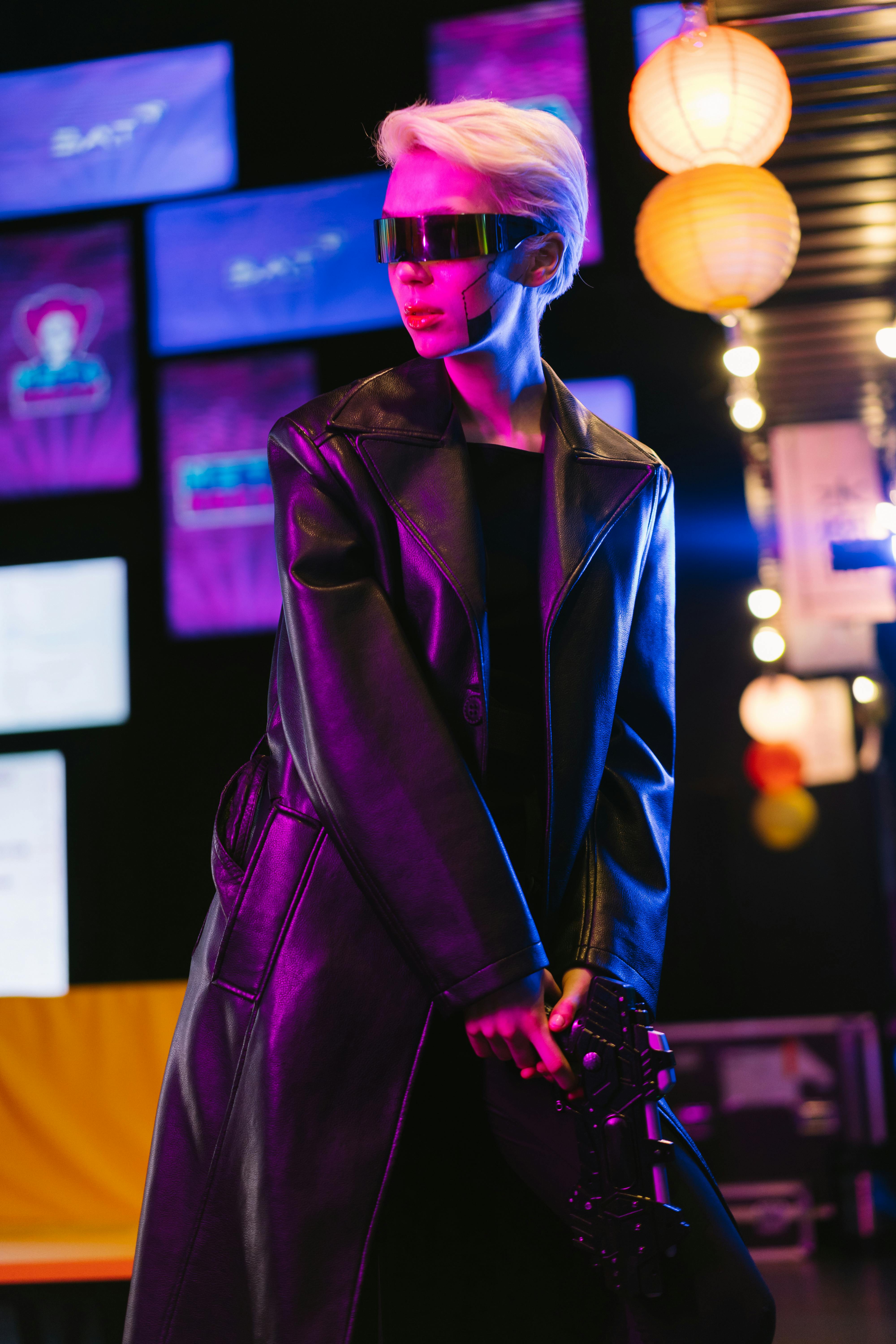Neon Nostalgia: The Retro-Futuristic Aesthetic in Modern Art
In an era dominated by sleek minimalism and digital art, a vibrant counter-movement is gaining momentum. Neon-infused retro-futurism, a style that marries the past's visions of the future with contemporary artistic sensibilities, is capturing the imagination of creators and audiences alike. This resurgence of vibrant colors, bold geometric shapes, and a dash of '80s cyberpunk is more than just a fleeting trend—it's a cultural phenomenon that's reshaping visual arts, fashion, and even architecture.

As the decades progressed, this optimistic view of the future began to shift. The 1980s brought a grittier, more dystopian perspective, heavily influenced by cyberpunk literature and films like Blade Runner. This era introduced neon lights, digital interfaces, and a darker urban aesthetic to the retro-futuristic palette.
Today’s neon-infused retro-futurism is a synthesis of these various historical influences, reimagined through a contemporary lens. It’s a style that simultaneously looks backward and forward, creating a unique temporal dissonance that resonates with modern audiences.
The Aesthetic Elements of Neon Retro-Futurism
At the heart of this artistic movement is a distinctive visual language. Neon colors play a crucial role, with electric blues, hot pinks, and acid greens dominating the palette. These vivid hues are often contrasted against deep blacks or midnight blues, creating a sense of depth and luminosity.
Geometric shapes are another key element, with triangles, circles, and zigzag patterns frequently employed to create dynamic compositions. These shapes often intersect or overlay, producing complex visual textures that evoke both digital interfaces and retro graphic design.
Typography in neon retro-futurism tends towards bold, sans-serif fonts, often with a slight glow or neon effect. Words and phrases become integral parts of the artwork, blurring the line between text and image.
Imagery often includes a mix of retro technology—like chunky computers or old-school arcade machines—and futuristic elements such as holograms or cybernetic enhancements. This juxtaposition of old and new is central to the aesthetic’s appeal, creating a sense of nostalgic futurism that feels both familiar and alien.
From Digital Art to Physical Spaces
While digital art platforms have been instrumental in the spread of neon retro-futurism, the aesthetic is increasingly making its way into physical spaces. Contemporary artists are creating large-scale installations that transform galleries and public areas into immersive retro-futuristic environments.
One notable example is the work of British artist Brendan Dawes, whose digital sculptures and interactive installations blend data, algorithms, and neon-hued visuals to create mesmerizing experiences. His pieces often incorporate real-time data feeds, translating information into pulsating, glowing forms that feel both retro and cutting-edge.
In the realm of architecture, firms like Bjarke Ingels Group (BIG) have begun incorporating elements of neon retro-futurism into their designs. Their proposal for the Terminus Mokotów in Warsaw, Poland, features a facade of illuminated geometric patterns that change color throughout the day, turning the building into a giant, interactive light sculpture.
Fashion’s Neon Revolution
The fashion industry has enthusiastically embraced the neon retro-futuristic aesthetic, with designers drawing inspiration from both ’80s cyberpunk and more recent vaporwave subcultures. Luxury brands like Balenciaga and Gucci have incorporated neon colors, holographic materials, and retro-tech inspired accessories into their collections.
Streetwear has been particularly receptive to this trend, with brands like MISBHV and Cyberdog creating collections that blend rave culture, cyberpunk aesthetics, and futuristic sportswear. These designs often feature reflective materials, LED-embedded fabrics, and bold graphic prints that reference both vintage computing and space-age fantasies.
The influence extends beyond clothing to makeup and hair styling, with neon-bright hair colors and graphic, geometrically-inspired makeup looks becoming increasingly popular on social media platforms like Instagram and TikTok.
The Cultural Impact of Neon Retro-Futurism
The rise of neon retro-futurism reflects broader cultural shifts and anxieties. In an era of rapid technological change and uncertain future prospects, this aesthetic offers a comforting blend of nostalgia and forward-thinking optimism.
For younger generations who didn’t experience the original ’80s and ’90s firsthand, neon retro-futurism provides a romanticized version of the past—one that feels simultaneously familiar and excitingly novel. It allows for a kind of temporal escapism, transporting viewers to an idealized moment when the future still seemed bright and full of possibilities.
Moreover, the aesthetic’s emphasis on bold colors and striking visuals makes it particularly well-suited to the attention economy of social media. Neon retro-futuristic artworks are inherently shareable, standing out in crowded feeds and capturing viewers’ attention in an increasingly competitive digital landscape.
The Future of Neon Nostalgia
As with any artistic movement, the question arises: how long can neon retro-futurism maintain its cultural relevance? While some critics argue that the aesthetic is already reaching saturation point, others see it as part of a broader cyclical trend in visual culture, with periods of minimalism alternating with more maximalist, color-saturated styles.
What seems clear is that neon retro-futurism has tapped into something deeper than mere nostalgia. It offers a visual language for expressing complex feelings about technology, progress, and the nature of time itself. As we continue to grapple with an uncertain future, this aesthetic provides a playful yet poignant way to reimagine our relationship with both past and future.
Whether neon retro-futurism evolves into new forms or eventually fades from prominence, its impact on contemporary visual culture is undeniable. It has reminded us of the power of color, the allure of the impossible, and the enduring human desire to imagine futures both wondrous and strange. In doing so, it has carved out a unique space in the landscape of modern art—one that glows with the vibrant, electric promise of tomorrow.





